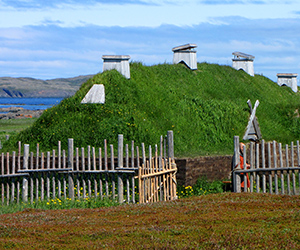CANADA HISTORY
Champlain

Samuel de Champlain, often referred to as the Father of New France, is one of the most important figures in Canadian history. His exploration of the St. Lawrence River and the establishment of Quebec City in 1608 laid the foundation for what would become French Canada. Champlain's life, spanning from his birth in 1580 to his death in 1635, was marked by an unwavering commitment to expanding French influence in North America, not only through exploration but also by building relationships with Indigenous nations and fostering a French presence that would last for centuries.
Early Life and Ambitions
Champlain was born in Brouage, a seaport on the west coast of France, in 1580. His early life in a maritime environment shaped his skills as a sailor, navigator, and cartographer, which would later be invaluable in his expeditions to the New World. Champlain, unusually for a Frenchman of his time, was a Protestant, though his religious beliefs did not prevent him from serving under Catholic monarchs or working alongside Catholic institutions throughout his career. He first gained prominence when he joined a group of French traders interested in the lucrative fur trade in North America. It was this fur trade, coupled with a desire for territorial expansion, that drove Champlain’s early ventures into the unknown lands of the St. Lawrence River.
Champlain's First Explorations
Champlain’s first significant expedition to North America occurred in 1603, aboard the ship Bonne-Renommee. His mission was to explore the St. Lawrence River, previously visited by Jacques Cartier, and assess its potential for further French colonization. Champlain’s mapmaking skills allowed him to produce one of the most accurate maps of the river, documenting its complex network of waterways and the territories of various Indigenous groups.
His return to France with detailed accounts and maps of the New World caught the attention of Henry IV of France, who tasked Champlain with returning to North America. In 1604, Champlain helped found a settlement on Saint Croix Island, located on the Bay of Fundy. However, the harsh winter proved fatal to many settlers, and the survivors relocated to what is now Port Royal in Nova Scotia. This early experience taught Champlain valuable lessons about the challenges of colonization, lessons he would apply during his future endeavors.
Founding Quebec City
In 1608, Champlain embarked on his most significant mission yet—establishing a permanent French settlement in North America. Departing from Honfleur, Champlain commanded the Don-de-Dieu and sailed up the St. Lawrence to the abandoned Indigenous village of Stadacona, where Jacques Cartier had once traded with the Iroquois. On July 3, 1608, Champlain and his settlers landed at what would become Quebec City.
Quebec, the first permanent French settlement in North America, marked the beginning of French sovereignty over the St. Lawrence River and surrounding territories. Champlain’s leadership during the early years of Quebec’s establishment was crucial. The first winter was devastating, as 20 of the 28 settlers died from scurvy and smallpox, but Champlain’s persistence ensured the colony’s survival. His ability to foster relationships with Indigenous peoples also became key to the colony’s stability.
Alliances and Conflicts with Indigenous Nations
Champlain quickly realized that survival in New France would depend on alliances with Indigenous nations, especially those involved in the fur trade. In 1609, Champlain formed alliances with the Huron, Algonquin, Montagnais, and Etchemin nations. These alliances were not without risks, as these groups were at war with the powerful Iroquois Confederacy. When Champlain agreed to aid his new allies in their conflict with the Iroquois, it set the stage for a long-standing enmity between the Iroquois and the French.
In July 1609, Champlain led a group of Algonquin and Montagnais warriors down the Richelieu River to Lake Champlain, where they encountered a group of Iroquois warriors. Champlain’s use of gunpowder—a technology unfamiliar to the Iroquois—led to a swift French victory, but it also entrenched the Iroquois as long-term enemies of New France. The alliances Champlain forged with the Huron and other Indigenous nations, however, proved critical to the fur trade and the expansion of French influence throughout the Great Lakes basin.
Expanding French Influence: Montreal and Beyond
Champlain returned to France to secure additional support for New France, and in 1611, he established a trading post near the former Iroquois village of Hochelaga, which would later become Montreal. His vision for the French colony was expansive, extending beyond Quebec and into the heart of the continent. Champlain's exploration took him deep into the Great Lakes region, reaching as far as Georgian Bay in Ontario, and further solidifying French presence in the region.
As lieutenant governor, Champlain was entrusted with growing the colony, establishing new trading networks, and maintaining French authority over its Indigenous allies. His birch bark canoe journeys up the Ottawa River, through Lake Nipissing, and into the Huron territories demonstrated not only his exploratory ambition but also his dependence on Indigenous knowledge and cooperation. These explorations expanded the French presence deep into the continent and helped position New France as a major player in the North American fur trade.
The Jesuit Missionaries and Religious Legacy
Another key element of Champlain’s leadership was his support for the arrival of Jesuit missionaries in New France. These missionaries, committed to converting Indigenous peoples to Christianity, played a significant role in shaping the cultural and religious landscape of the colony. The Jesuits founded schools, churches, and missions, and although their efforts to convert the Indigenous peoples were met with mixed results, they nonetheless established a permanent religious presence that would persist through the centuries.
Champlain’s religious legacy also included his efforts to maintain peace between the Catholic French settlers and the Indigenous nations with whom they traded and allied. While he never forced Christianity upon the Indigenous peoples, his support for the Jesuit mission demonstrated his commitment to maintaining New France as a Catholic colony.
The Final Years of Champlain’s Life and Legacy
By the time of Champlain’s death on December 25, 1635, he had not only founded Quebec and extended French influence across the Great Lakes but also ensured the survival and future growth of New France. His efforts to strengthen relationships with Indigenous nations, organize the fur trade, and expand French territorial claims laid the foundation for a colony that would thrive for over a century before British conquest in 1763.
Champlain’s death marked the end of an era, but his legacy endured. His leadership during New France’s formative years helped shape the identity of the French Canadian people. His voyages, maps, and writings left a lasting historical record of the early days of French exploration in North America. In fact, Quebec City, the heart of French Canada, remains a testament to Champlain’s vision of a permanent French presence in the New World.
His cartography, exploration, and ability to navigate the complex relationships between the French, Indigenous nations, and European powers helped secure New France’s future. His work laid the groundwork for the French Canadian culture that still thrives in Quebec today. Samuel de Champlain, through his relentless exploration, diplomacy, and governance, left an indelible mark on Canadian history, shaping the course of the nation’s early development and ensuring a French cultural legacy that would endure well beyond his lifetime.
THE VOYAGES TO THE GREAT
RIVER ST. LAWRENCE BY THE
SIEUR DE CHAMPLAIN, . . .
FROM THE YEAR 1608 UNTIL
1612
Credit for establishing the first permanent settlement in
Canada belongs to Samuel de Champlain, "The Father of
New France." Born in France in 1567, Champlain made
his first voyage to the St. Lawrence region in 1603, and
in 1604 he took part with De Monts in an abortive attempt
to establish a French colony in Acadia. It was on
his third voyage, in 1608, that he succeeded in founding
a settlement at Quebec. From his base at Quebec he made
further explorations, discovering Lake Champlain and
exploring the Ottawa Valley. In 1615 he reached Georgian
Bay by way of the Ottawa River and Lake Nipissing.
The documents given here describe Champlain's arrival at
Quebec, the construction of the first buildings in the
setttlement, and the difficulties of the first winter.
. . . From the island of Orleans to Quebec is one
league, and I arrived there on July the third [ 1608 ]. On
arrival I looked for a place suitable for our settlement, but
I could not find any more suitable or better situated than
the point of Quebec, so called by the natives, which was
covered with nut-trees. I at once employed a part of our
workmen in cutting them down to make a site for our
settlement, another part in sawing planks, another in dig.
H. P. Biggar, ed., The Works of Samuel de Champlain
( Toronto, The Champlain Society, 1925), II, 24-25, 35-
37, 44-45, 52-53, 59, 63.
Cite Article : www.canadahistory.com/sections/documents




